The Ultimate First-Timer's Guide to Must-See Istanbul Attractions
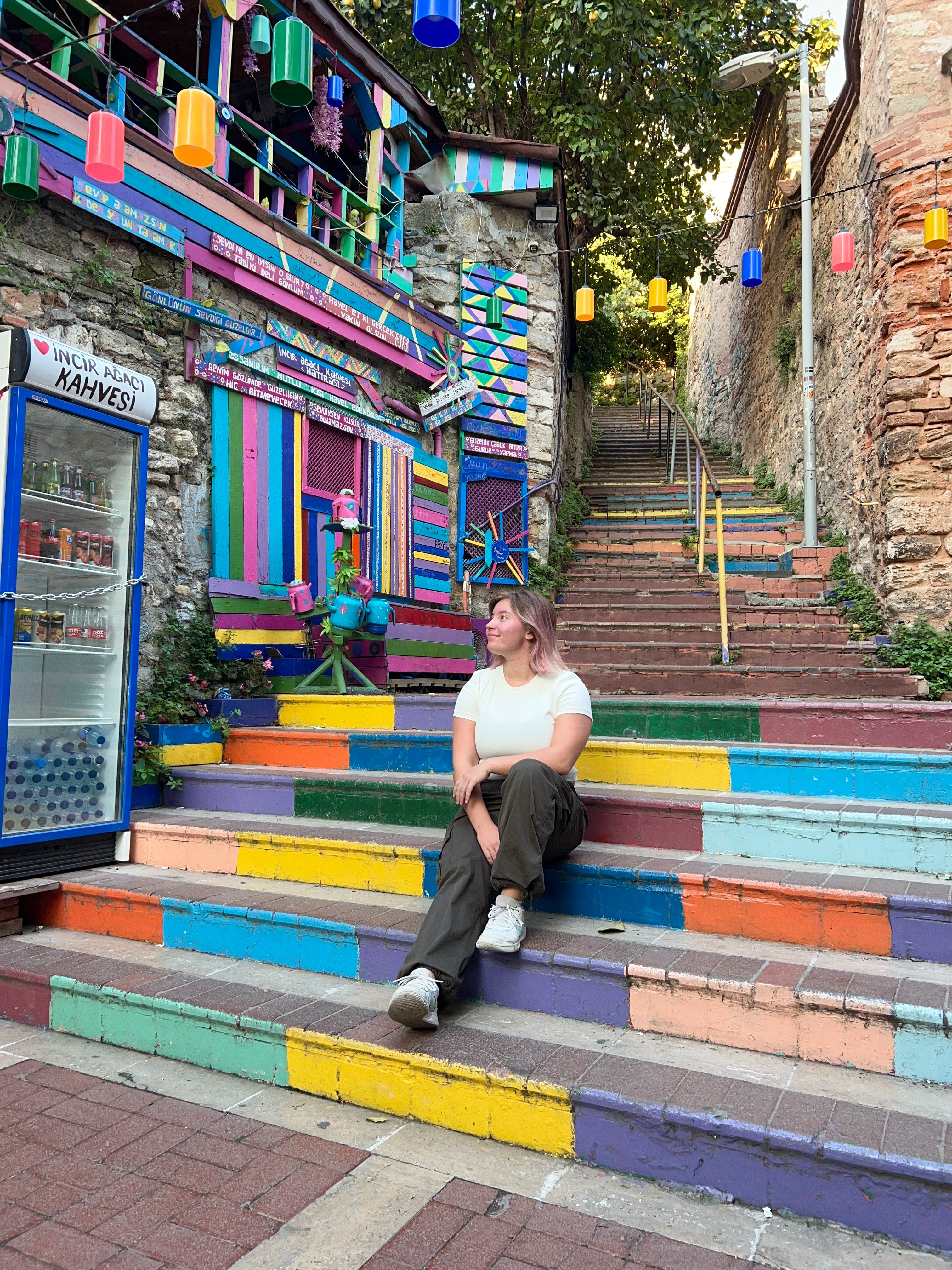
Good to know before visiting Istanbul
Europe and asian side
Istanbul is the only part of the world placed on two continents. The European side is typically more touristic, with major landmarks like Hagia Sophia and Topkapi Palace, while the Asian side offers a more laid-back and local experience with its charming neighborhoods like Kadıköy and Üsküdar. The two sides are well connected by bridges and ferries, and there’s no issues going back and forth.
Bosphorus
The Bosphorus is a strait (not a river nor a sea) dividing its two sides of Istanbul. The Bosphorus is the only connection between the Mediterranean Sea and the Black Sea, making it a crucial infrastructure point of the world. You can take several cruises on this 30km stunning strait including this one.
Areas of Istanbul
Each district in Istanbul offers a different character. Sultanahmet (green) is home to most historical sites, Beyoğlu (blue) is known for its vibrant nightlife and shopping, while Karaköy (red) are full of trendy cafes, art galleries, and local culture. Balat (orange) is best for longer stays & seeing an alternative area of Istanbul while Üsküdar (purple) is the best area on the asian side (in my opinion).
Where to stay in Istanbul
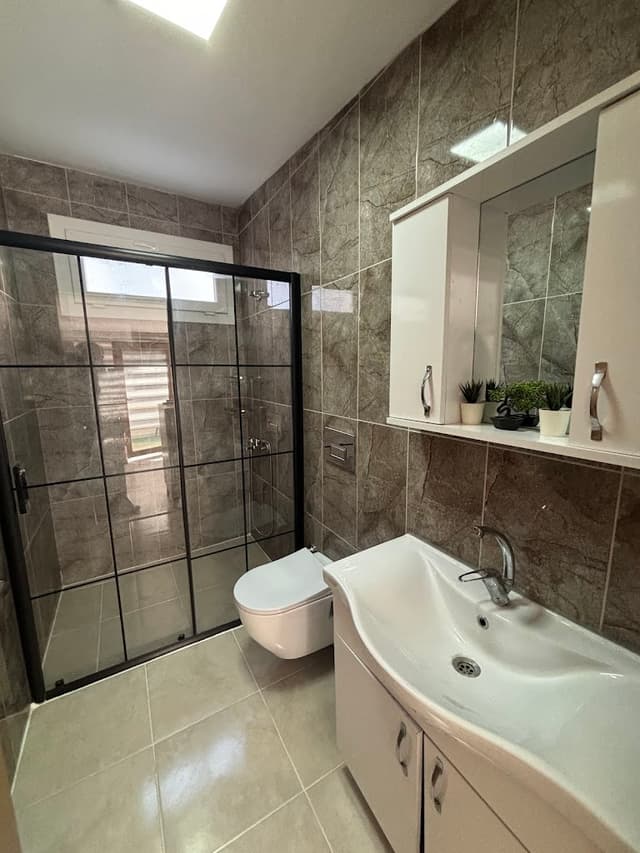

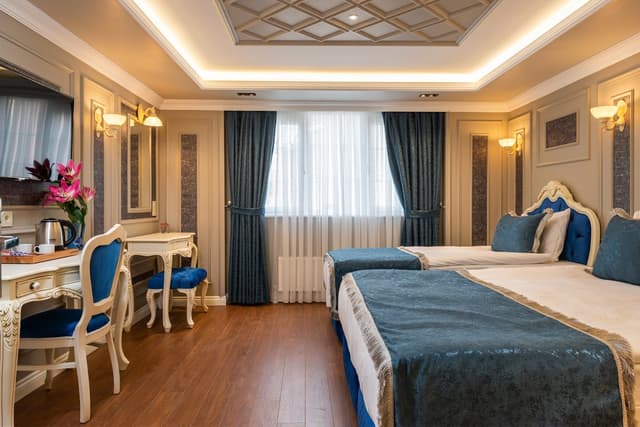
Public Transportation in Istanbul
Getting around Istanbul is both easy and cheap with public transportation. You can use your credit card or an Istanbulkart (see below) to buy fares with all public transportation in Istanbul. Note that you CAN NOT pay cash.
Google maps is the easiest way to find accurate information on how to get around in Istanbul with public transportation.
There’s several modes of public transportation in Istanbul:
BUS
Most buses that operate on both the european and asian side of Istanbul are yellow.
Using the bus costs 20 lira (€0.5) one way. Here you tap your istanbulkart (or credit card) at the machine when you enter the bus.
Don’t trust the actual times google maps says your bus will arrive. Traffic is chaotic and filled with delays so focus on the bus number and just wait.
TRAM
On the European side, there are two lines in service, the T1 line from Kabataş allows easy access to Sultanahmet and the T4 line that goes North.
You have to pass a barrier by tapping your istanbulkart (or credit card) before entering the tram platform.
Using the tram costs 20 lira (€0.5) one way.
METRO
Line M2 is the longest metro line in Istanbul and the only one you will really use.
The European side and the Asian side are also connected by the metro which passes under the Bosphorus called Marmaray. The Marmaray line cost 40 lira (€1)
FERRY
Ferries are the best way to get back and forth between the european and asian side of Istanbul. The ferries operate all day and take just as long as the Marmaray line. You’ll most likely only use the Eminönü and Üsküdar port.
Istanbulkart
The Istanbulkart is a rechargeable magnetic card that works on trams, buses, ferries, and metros. You can buy the card from any machine near tram, ferry and metro stops. The card itself costs 130 liras (€3.5) and then you have to add credit to it. Be aware that you can’t get the credit back, so only fill up the Istanbulkart a little at a time - I recommend 500 liras (€13) to begin with if you’re staying several days.
NOTE: a small transaction fee is applied every time you tank up your istanbulkart.
How long should you stay?
Istanbul is a big city with lots of things to do. If you're on a budget I'd recommend 4-6 days to walk around and visit the different areas of the city. But you can easily spend more than a week in Istanbul. If you want the full experience and some days to relax as well, 10-14 days is ideal.
When to visit Istanbul
Unlike many european destinations, shoulder-season in Istanbul is actually late-October and november. Because of the intense heat from July-August, most tourists opt to go in September and early October. Otherwise visiting from november all the way to may, should be pleasant.
Etiquette when visiting mosques
As the Mosques in Istanbul are religious sites, it is important to respect certain rules and customs when visiting:
Dress Code: Visitors must dress modestly. Men should wear long pants (below the knee), and women are required to cover their heads, shoulders and knees. Most mosques provides scarves and skirts for those who are not dressed appropriately.
Shoes: You must remove your shoes before entering the mosque. Before actually stepping inside the Mosque there's a carpet - you are not allowed to step on the carpet with shoes. There's shelves inside the mosques where you can place your shoes, or you can keep them in your hands.
Quiet and Respectful Behavior: Since it is a place of worship, maintaining a respectful attitude and avoiding loud conversations or disruptive behavior is expected.
Prayer Times: The mosque closes to visitors during prayer times, which occur five times a day. It’s a good idea to check the local prayer schedule to time your visit accordingly. Islamic prayer times follow the sun, so prayer doesn't happen at the same time every day.
Istanbul Attractions
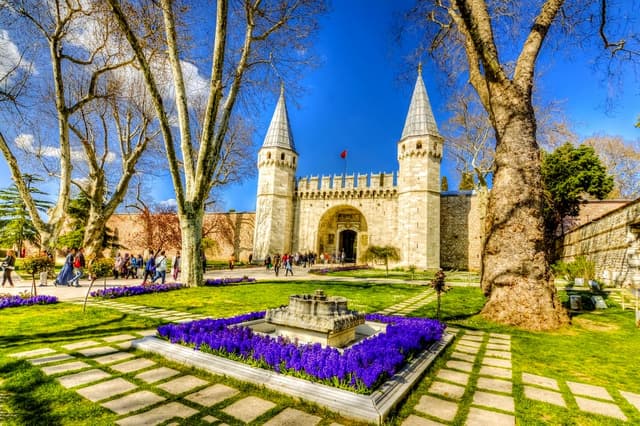
After Sultan Mehmed II conquered Constantinople (and renamed it Istanbul) he ordered the construction of “The new Palace” which was completed in 1465. Topkapi palace was the home of Ottoman sultans for centuries until it ceased function as a royal residence in 1853. Today it’s a museum that houses the legendary “Spoonmaker’s Diamond”, one of the largest cut diamonds in the world, as well as several historical artefacts like the thrones of Ottoman Sultans and weapons.
The Harem apartments, is a secluded section of the Topkapi Palace with more than 400 rooms. It houses some of the most private areas of the royal residence, like the luxurious baths of the King and the Queen Mother.
Pro tip: Set aside at least 3 hours to explore this beautiful palace.
Opening hours: daily 9am to 5pm (Closed on Tuesdays)
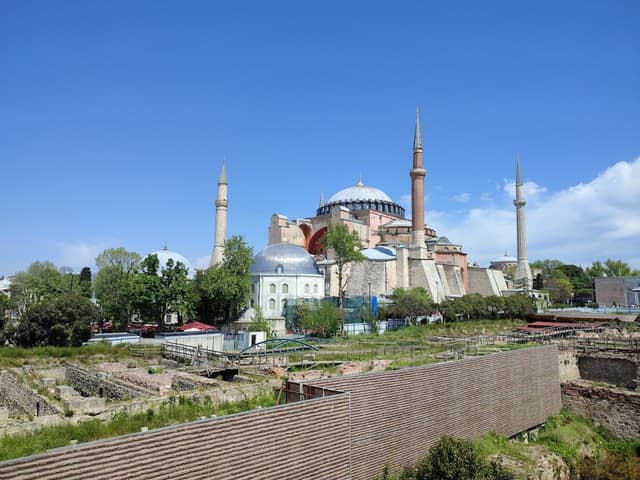
Standing 55.6 meters high, the dome of Hagia Sophia is an architectural icon which has made the building collapse a few times during its long history. Hagia Sophia was built as a cathedral by the Eastern Roman Emperor Justinian in 537 BC. After the Ottoman conquest of Constantinople in 1453, Hagia Sophia was turned into a mosque. And finally in 1935 Hagia Sophia was converted into a museum and was free to enter for everyone visiting Istanbul. During covid Hagia Sophia was re-converted as a mosque in 2020, and only free to enter by muslim worshippers. Today the ground floor of the mosque is closed for non-muslims but the upper floor can be visited.

Istanbul has more than 200 cisterns, with the largest one being Yerebatan Sarnıcı - also called Basilica Cistern. Made up by more than 300 marble columns, this cistern served as an incredible hub of water filtration system for centuries.
Opening hours: daily 9am to 5pm (closed on mondays)
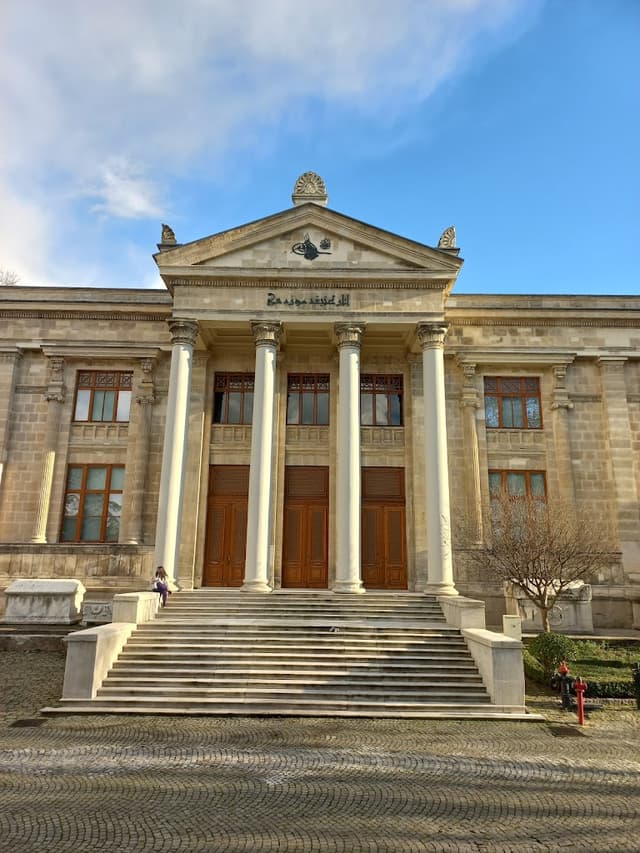
The Arkeoloji Müzesi (İstanbul Archaeological Museums) has twenty galleries filled with artefacts from all over Türkiye and the East, celebrating 5000 years of history with exhibits from Eastern Roman, the Ottoman Empire and Egypt. The museum was founded in 1891 after several international archaeologists had exported artefacts from Turkey, taking away pieces of its history - for example Pergamon Altar (Zeus Temple), which was a construction built during the reign of the Ancient Greek King Eumenes II in the first half of the 2nd century BC on the terraces of the acropolis of Pergamon in Asia minor (modern-day Turkey). In 1878, the German engineer Carl Humann started official excavations on the acropolis of Pergamon and shipped each stone to Berlin, where they were rebuilt in a museum, which you can visit today.
Opening hours: daily 9am to 8pm
Entrance fee: €15
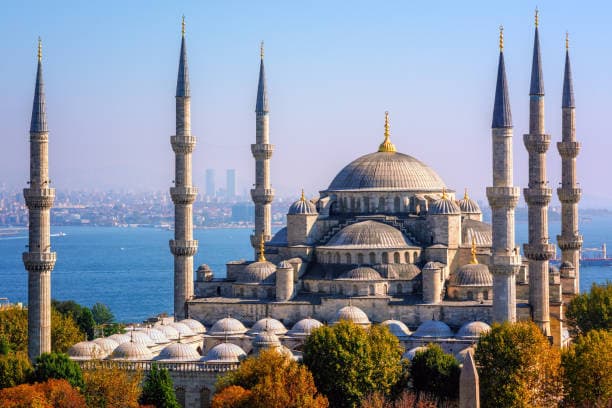
One of Istanbul’s most iconic and stunning landmarks known as the “Blue Mosque” because of its 20,000 rich blue ceiling tiles. The mosque was built in 1616 to affirm the power and grandeur of the Ottoman Empire and was intended to rival, or even surpass, the beauty of the Hagia Sophia - hence why they’re only 290m apart.
One of the mosque’s most distinctive features is its six minarets, an unusual number for a mosque (most have two or four). According to legend, Sultan Ahmed wanted to surpass the Haram Mosque in Mecca, which also had six minarets at the time. To avoid controversy, a seventh minaret was later added to the mosque in Mecca.
Opening hours: daily 9am to 6pm
Entrance fee: free

Dolmabahçe Palace was completed in 1856 and is the largest palace in Turkey. The sultan wanted to replace the more traditional Topkapi Palace with a modern, European-style residence. The last sultan to reside in Dolmabahçe was Sultan Mehmed VI, who fled the palace in 1922 when the Ottoman monarchy was abolished. Today the palace stands as a testament to the Ottoman empire’s desire to project power and prestige in the face of European influence. Dolmabahçe Palace has 285 rooms, 46 halls, 6 Turkish baths (hammams) mainly known for its grand crystal staircase and waterfront façade towards the Bosphorus.
Opening hours: daily 9am to 6pm (closed on mondays)
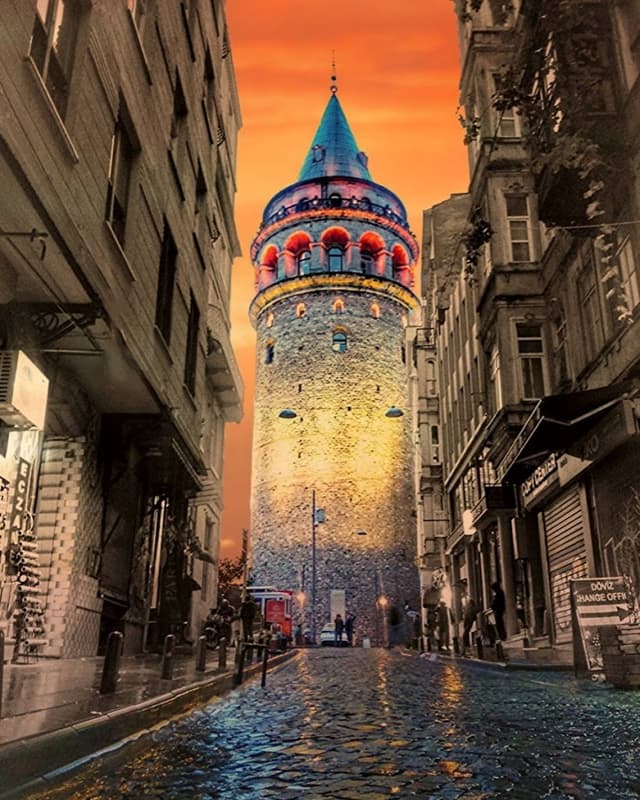
One of the city’s most iconic landmarks, this mediaeval stone tower offers panoramic views of Istanbul from its top. Built in 1348 the tower was originally built by the Genoese colony that inhabited Galata, a trading settlement directly across the Golden Horn from Constantinople (hence the name Galata Tower). It was part of a larger defensive wall system meant to protect the colony. The tower, known as the "Tower of Christ", was the tallest structure in the city at that time (it’s 67 metres tall). Today, Galata Tower houses a small museum on the lower floors and a 360 viewing platform at the top.
Opening hours: daily 9am to 7pm
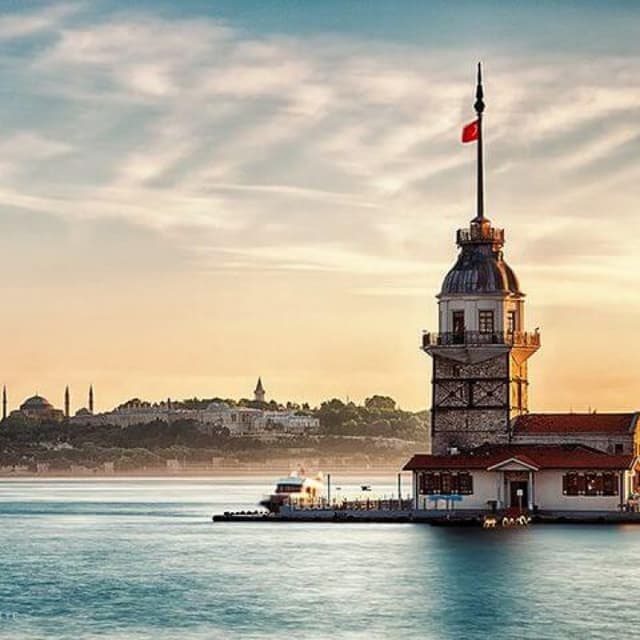
Sitting on a small islet in the Bosphorus, Maiden's Tower is part of a legend, where the Sultan’s daughter was kept after he had a dream that a snake would bite and kill her. Nevertheless today it offers a picturesque view of both the European and Asian side of istanbul.
Opening hours: daily 9am to 8pm
Entrance fee: FREE
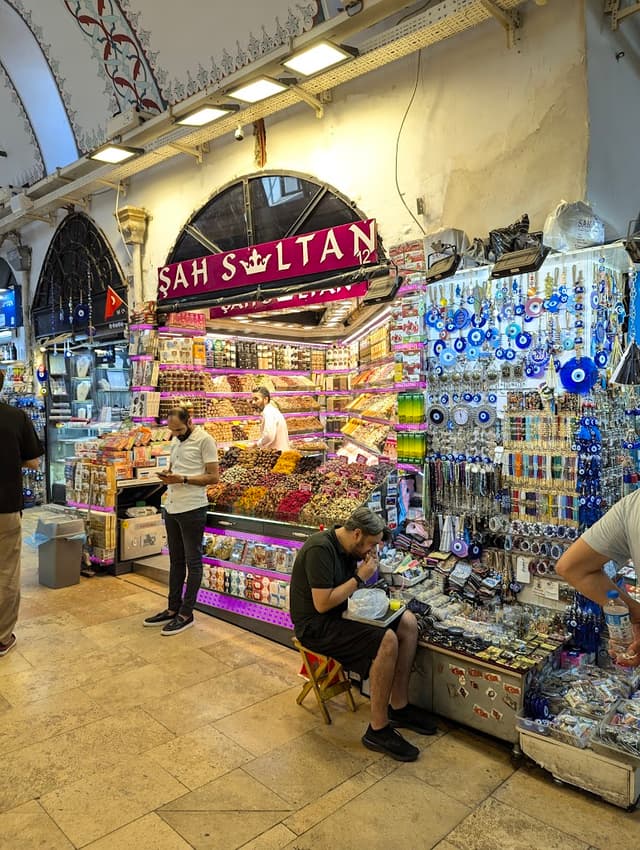
Grand Bazaar: the busiest of Istanbul attractions
As the oldest and largest covered market in the world, the Grand Bazaar is a labyrinth of over 4,000 shops and stalls that span more than 60 streets, offering a vibrant mix of goods from carpets and jewellery to spices and antiques.
The Grand Bazaar was originally commissioned shortly after the Ottoman conquest of Constantinople in 1453. Its initial purpose was to serve as a central market for textiles and luxury goods. As the Ottoman Empire expanded, so did the bazaar and by the 17th century, it had grown significantly and became a central hub for trade, not only within the empire but also for merchants from Europe, Asia, and the Middle East. It gained a reputation for being a major trading post on the Silk Road.
There are 22 gates leading into the bazaar, with the most famous being the Beyazıt Gate (Gate 1) and the Nuruosmaniye Gate (Gate 7). These gates are marked with inscriptions and date back to different periods of the bazaar’s history.
Opening hours: daily 8.30am to 7pm (closed on sundays)
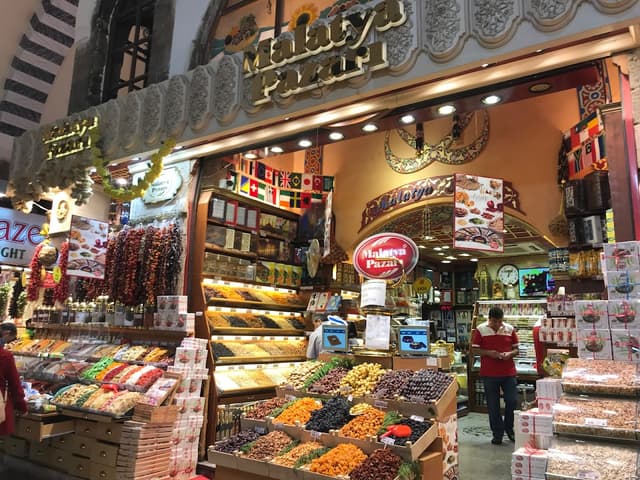
Also known as the Spice Bazaar, this historic marketplace has been a central hub for the spice trade since the 17th century, famous for its aromatic spices, teas, and Turkish delight.
The Spice Bazaar was built as part of the New Mosque complex (Yeni Cami) in the 1660’s. Like the Grand Bazaar, the Spice Bazaar is an enclosed market, although it’s smaller, with about 85 shops in a U-shaped design.
Opening hours: daily 9am to 7pm
Bosphorus Cruise
No trip to Istanbul is complete without having cruised the Bosphorus. Luckily there’s many different tours to choose from. If you want a slow and relaxing trip down the strait - simply just lean back, sip some tea and enjoy the views.
BEST FREE THINGS TO DO IN ISTANBUL
Walking tours
This is my favourite way to see a new city. There’s many free walking tours available in Istanbul that cover different areas of the city, from the historical Sultanahmet to the trendy streets of Karaköy.
I did two walking tours in Istanbul, both the old city tour and 2 continents 1 city, which I highly recommend!
NOTE: because free walking tours are free, it’s a common courtesy to tip your guide at least €10.
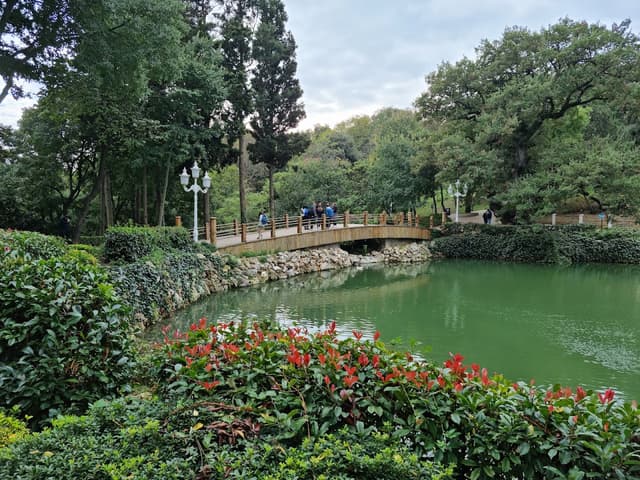
Yıldız Park is one of Istanbul’s largest and most beautiful green spaces. Originally part of the imperial gardens of the nearby Yıldız Palace, it’s now a public park that offers a peaceful escape from the city's bustle.
The park has a lot of fun elements like hanging bridges and waterfalls.

A beautiful baroque mosque located right on the waterfront in Ortaköy, offering iconic views of the Bosphorus Bridge. The mosque was built in the mid-19th century and is one of the only baroque mosques in istanbul.
Opening hours: 9am to 6pm
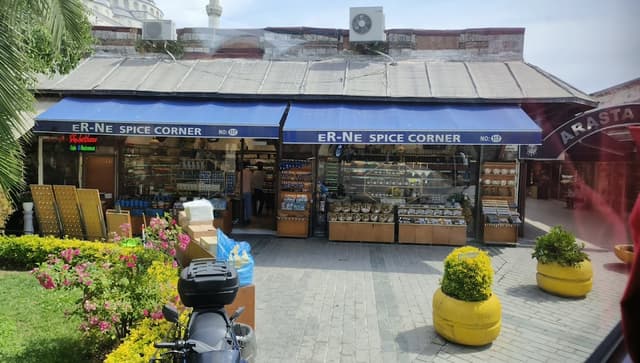
A smaller, less crowded Bazaar much more charming than the Grand Bazaar, located just behind the Blue Mosque.
Opening hours: daily 9am to 7pm

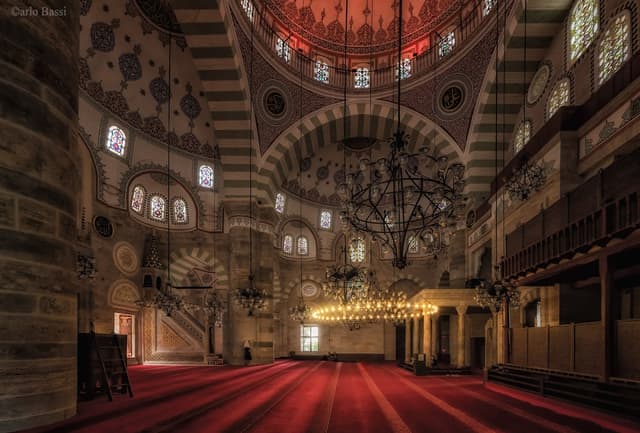
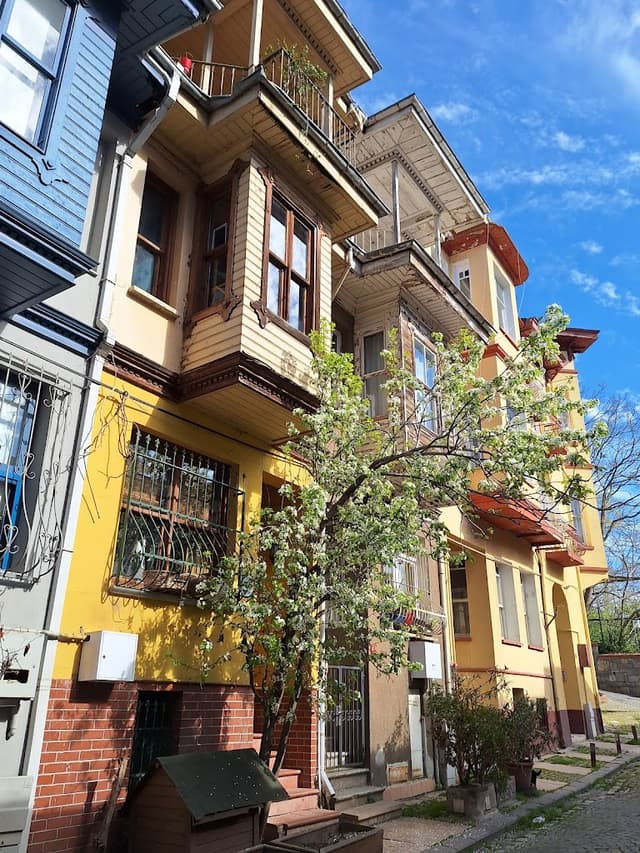

3 day Istanbul itinerary
Day 1: Historical Core - Sultanahmet
This day will cover some of Istanbul’s most famous historical attractions in the Sultanahmet district.
Morning (10am-12.30pm): Go on a free walking tour of the old city
Lunch: Grab a meal at a traditional Turkish restaurant in the Sultanahmet area.
Topkapi Palace: Spend your afternoon exploring the vast grounds of Topkapi Palace, including the Harem Apartments and the Hagia Irene Museum.
Basilica Cistern: Walk underground to see the eerie beauty of the Basilica Cistern and its Medusa head columns.
Dinner: Have dinner at Seven Hills Restaurant with views of the Hagia Sophia.
Take the ferry to Üsküdar and have breakfast at Kadim Kahve.
Visit Mihrimah Sultan Mosque: named after Sultan Suleimans daughter, she did not like the mosque because the windows were too small. Hence why there’s another Mihrimah Sultan Mosque in Fatih.
Zipline Adventure with Bosphorus View: Experience the thrill of a zipline ride while taking in stunning views of Istanbul from Nakkaştepe National Garden.

Explore the Kuzguncuk and Kadıköy neighborhood in the afternoon.
Day 3: Bosphorus and Ortaköy
Dolmabahçe Palace: Start with a guided tour of the lavish Dolmabahçe Palace, known for its opulent décor and grand halls.
Picnic at Yıldız Park: get away from the hustle and bustle of the tourist attractions.
Ortaköy Mosque (Grand Mecidiye Mosque): Visit the beautiful Ortaköy Mosque, located right on the waterfront with iconic views of the Bosphorus Bridge.
Bosphorus Cruise: In the afternoon, take a relaxing Bosphorus cruise to see the city from the water. You’ll pass by both the European and Asian sides, along with views of the Rumeli Fortress, Maiden’s Tower, and historic mansions.
Dinner: Enjoy dinner at one of the cozy cafes or restaurants in Ortaköy Square.
The home for unique & authentic travel







